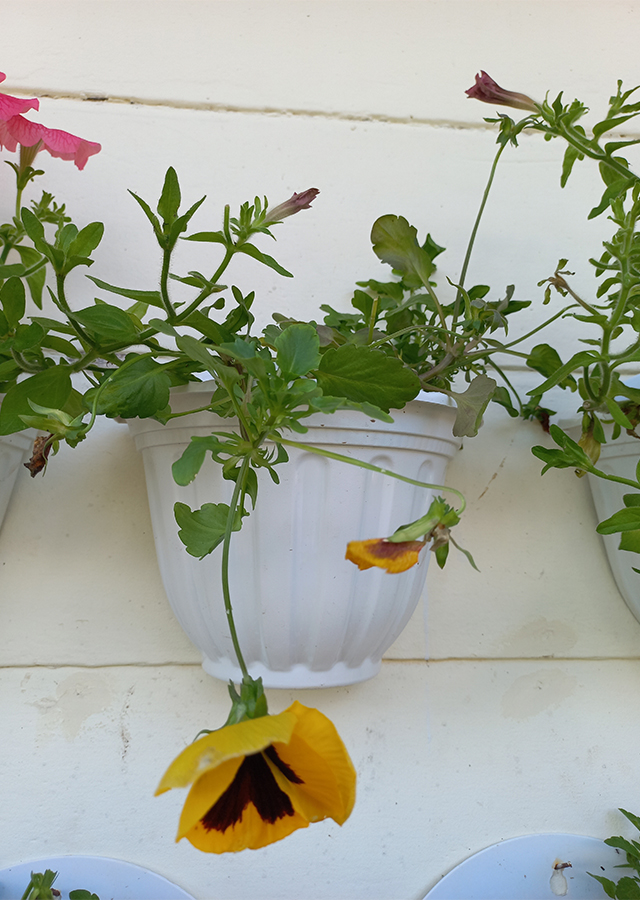Traditional Herbs from Viola tricolor
eczema
- Prepare enough fresh pansy leaves, wash them thoroughly.
- Crush them into a paste.
- Apply the paste\u00a0on the skin.
What is Viola tricolor Looks like??



Parts of Viola tricolor that could be used
- Leaves
- Roots
- All Parts of the Plant
Viola tricolor Distribution
Viola tricolor is a flowering plant whose distribution covers Europe, including England, from southern and eastern Scandinavia to Corsica, West Asia, Siberia, the Caucasus. These plants are harvested from the wild for local use as food, medicine and a source of dye. This species is sometimes planted as an ornamental plant in the yard. Viola tricolor has young leaves and flower buds that are more or less edible (raw or cooked), although species with yellow flowers can cause diarrhea if eaten in large quantities. This species also has thickening properties when added to soup. And the leaves can be used to make tea. Sometimes, the flowers can also be added to salads or used as a garnish. Viola tricolor has a long history in traditional medicine and herbal concoctions to treat various diseases, especially epilepsy, skin and respiratory diseases. In modern herbal medicine it is seen as a purifying herb and is taken internally in the treatment of skin complaints. Yellow, green and blue-green dyes are obtained from flowers. In addition, the leaves can be used as a substitute for litmus in acid and base tests. When using this plant, caution is required. Sometimes a decoction of this plant can cause dermatitis in some people.Agroecology of Viola tricolor
Viola tricolor can grow well at altitudes ranging from 0 to 2,700 m above sea level. It can usually be found in short grasslands on agricultural land as well as wastelands on acidic and neutral soils. This species usually prefers partial shade and protection from the wind, but also grows successfully in places without shade, and prefers humus-rich, moist and well-drained soil. This species can also tolerate sandstone and limestone soil and likes soil acidity (pH) between 6 and 6.5, but becomes chlorotic if the pH is too high.
Morphology of Viola tricolor
- Roots have a rhizome type with fine roots.
- Stems are upright or slightly upright, light green to purplish green, glabrous, angular, hairless, sometimes finely hairy and branched.
- Leaves are short-stemmed, alternate (alternate) , green, ovate-lanceolate, crenate-toothed-serrate leaf edges, glabrous hermaphroditic, solitary. The corolla varies in color from white, yellow to purple and blue, but is often found in two colors, namely yellow and purple. The petals are five and longer than the sepals. solitary on a long, nodding stalk.
- Fruit capsule, tri-valved elastic, ellipsoid-oval.
- Seeds ovate, shiny, brown.
Cultivation of Viola tricolor
- Generative propagation using seeds.
- Pollination and distribution is assisted by bees.
Viola tricolor, more details :
Chemical Content of Viola tricolorEssential oils (sesquiterpenes, aliphatic, shikimic acid derivatives, and monoterpenes), terpenoids, phenolic compounds, flavonoids (rutin, violanthin, scoparin, saponaretin, orientin, vicenin, and anthocyanidin glycosides), saponins, tannins, salicylic acid and its derivatives (methyl esters and violutoside), phenol carboxylic acids (trans-caffeic acid, protocatechuic acid and p-coumaric acid), coumarin, umbelliferone, ascorbic acid, polyphenols, and tocopherols.
Benefits of Viola tricolor
Treats epilepsy, asthma, skin diseases (such as eczema, acne, skin eruptions), various respiratory complaints (such as bronchitis, asthma, whooping cough, cold symptoms), rheumatism, cystitis (inflammation of the bladder), pneumonia, bed-wetting, relieves constipation, difficulty urinating, reduces swelling, improves blood circulation which is beneficial for heart health. This plant is anodyne, antiasthmatic, anti-inflammatory, demulcent, depurative, diaphoretic, diuretic, emollient, expectorant, laxative and vulnerary.
Simplisia of Viola tricolor
- Prepare fresh pansy leaves then wash them thoroughly with running water\u00a0then drain them.
- Dry them in direct sunlight for several days or in an oven at a temperature\u00a040\u00b0C until the water content\u00a010%.
- Pure them using a blender until it becomes powder.
- Store\u00a0simplisia in plastic or a clean, airtight container.
Another Facts for Viola tricolor :
Synonym of Viola tricolorJacea tricolor (L.) Opiz, Mnemion tricolor (L.) Spach, Viola versicolor Salisb., �
Habitus of Viola tricolor
Herb. Short-lived annual or annual herbs, between 10-40 cm high
Habitat of Viola tricolor
- Grassland
- Land
No comments:
Post a Comment